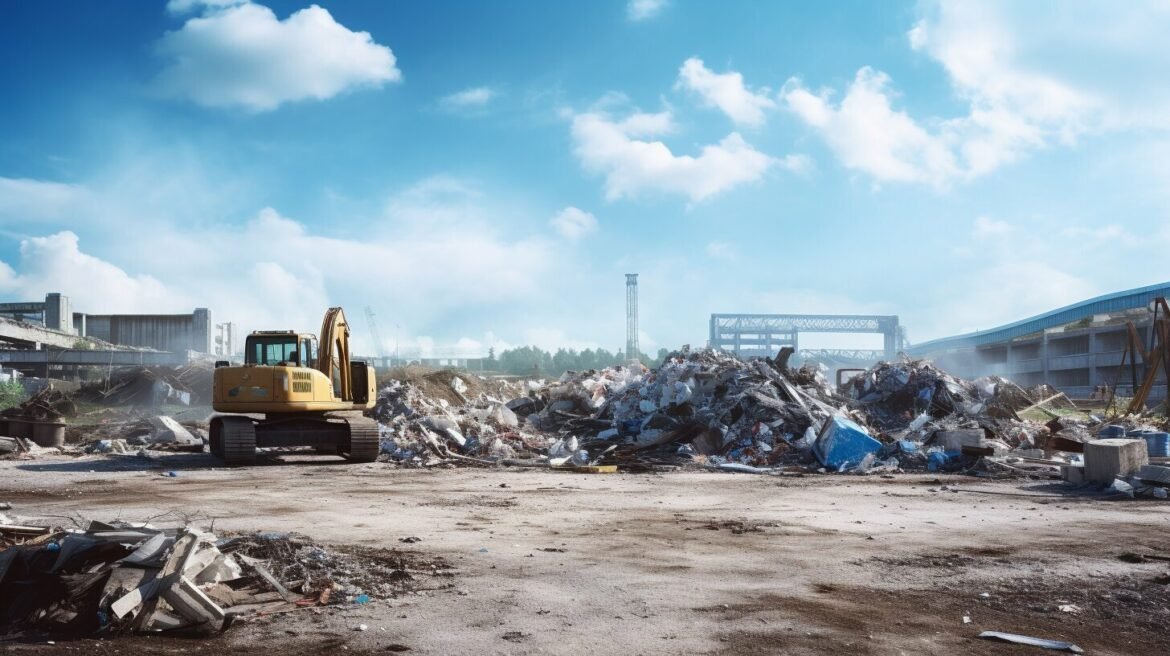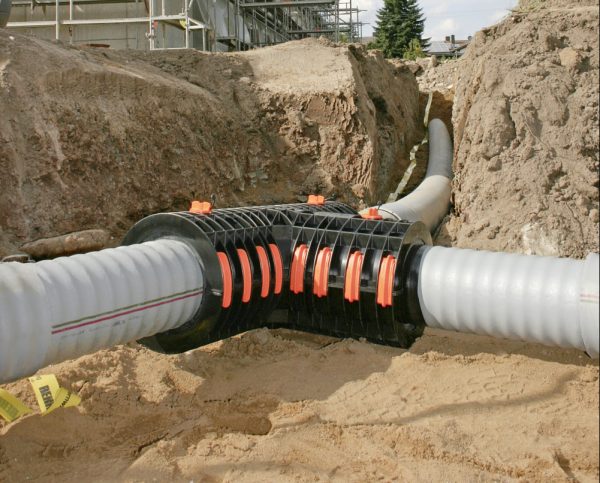Understanding the Impacts of Waste Generated from Construction
The construction industry is an important aspect of economic growth, but also has significant environmental impacts. One of the major concerns is the amount of waste generated from construction sites. This waste includes materials such as concrete, wood, metal, plastics, and other building materials that are discarded during the construction process.
Waste generated from construction has several negative impacts on the environment. For instance, it contributes to air, water, and soil pollution. It also takes up valuable space in landfills, which are becoming increasingly scarce. Additionally, waste generated from construction contributes to greenhouse gas emissions, which are a major cause of climate change.
Given these environmental repercussions, it is important for construction companies to adopt sustainable practices and reduce waste generation. This can be achieved through proper waste management, recycling initiatives, and sustainable construction practices.
Key Takeaways:
- Construction waste has negative environmental impacts, including air, water, and soil pollution.
- Waste generated from construction takes up valuable space in landfills and contributes to greenhouse gas emissions.
- Sustainable practices and waste reduction initiatives are necessary to mitigate these impacts.
Construction Waste Management: A Key Priority
Effective management of waste generated from construction is a key priority for the industry as it has a significant impact on the environment. The construction industry is responsible for producing a considerable amount of waste, including excavation waste, demolition waste, and building construction waste. The improper disposal of construction waste can lead to negative outcomes such as soil erosion, air and water pollution, and greenhouse gas emissions. Therefore, it is crucial to adopt sustainable construction practices to minimize the environmental impact of waste generated from construction.
There are various methods of managing construction waste such as landfilling, incineration, and recycling. Among these methods, recycling is the most preferred approach as it reduces both the amount of waste sent to landfills and the demand for virgin materials. Construction waste recycling involves sorting and processing waste materials such as wood, concrete, metal, and plastics into new products. This process not only conserves natural resources but also helps in reducing greenhouse gas emissions.
Construction waste management is not only crucial from an environmental perspective but it also makes economic sense. By adopting waste reduction strategies such as source reduction, materials management, and waste diversion, construction companies can save on material and disposal costs. Furthermore, by choosing to recycle waste materials, companies can generate income from the sale of these materials as well as save money on landfill costs.
Sustainable Construction Practices as a Solution
The adoption of sustainable construction practices is vital in addressing the issue of waste generated from construction. Sustainable construction practices involve using materials and design techniques that have a lower environmental impact. This includes using renewable materials, designing for disassembly, and using energy-efficient systems.
One example of a sustainable construction practice that can help in reducing waste is the use of modular construction. Modular construction involves building prefabricated units off-site and then assembling them on-site. This process results in less waste generation compared to traditional construction methods, as it allows for more precise material cutting and reduces the risk of errors.
In conclusion, effective construction waste management is crucial in reducing the environmental impact of waste generated from construction. By adopting sustainable construction practices and waste reduction strategies, construction companies can not only reduce their environmental footprint but also save on material and disposal costs. Recycling construction waste is a crucial aspect of waste reduction, and it is important that the industry takes on this challenge by adopting innovative and forward-thinking waste management practices.

Strategies for Reducing Construction Waste
Construction waste reduction is crucial for the environment and the economy. Not only does it help reduce the amount of waste that ends up in landfills, but it also saves money and resources by minimizing the need for new materials and reducing disposal costs. There are several effective strategies available for reducing construction waste, and they all start with proper planning and material management.
Proper Planning: Proper planning is critical to reducing construction waste. By conducting a waste audit and developing a comprehensive waste management plan before construction begins, you can identify potential waste generation hotspots and plan accordingly. This includes minimizing over-ordering of materials, utilizing prefabricated and modular components, and choosing materials that can be easily recycled or repurposed.
Material Management: Effective material management is essential to reducing construction waste. This includes proper storage, handling, and transportation of materials to reduce damage and waste. It also means implementing a systematic approach to inventory management and using just-in-time delivery methods to reduce excess inventory and materials that may be subject to damage or spoilage.
Recycling Initiatives: Recycling is a critical component of construction waste reduction. By implementing recycling initiatives on construction sites, construction companies can reduce the amount of waste that ends up in landfills and conserve natural resources. This includes recycling materials such as concrete, steel, and wood, as well as implementing composting and other waste reduction strategies.
Overall, reducing construction waste requires a comprehensive approach that involves effective planning, material management, and recycling initiatives. By prioritizing waste reduction and incorporating sustainable practices into construction projects, we can minimize our impact on the environment and create a more sustainable future for the building industry.

Waste Management in Construction: Guidelines and Regulations
When it comes to waste generated from construction, there are various guidelines and regulations in place to ensure responsible waste management. These guidelines and regulations provide construction companies with clear rules and standards to adhere to in order to minimize environmental impact and promote sustainable construction practices.
The most important regulations for construction waste management in the UK are the Environmental Protection Act 1990 and the Waste (England and Wales) Regulations 2011. Under these regulations, construction companies are legally obligated to ensure that their waste is properly disposed of and recycled where possible. Failure to comply with these regulations can result in significant penalties and fines.
In addition to legal requirements, there are also industry standards and guidelines that construction companies should follow. For example, the Site Waste Management Plan (SWMP) provides a framework for effective waste management on construction sites. The SWMP outlines the different types of waste generated, how they will be disposed of, and who is responsible for waste management.
Overall, it is essential for construction companies to follow these guidelines and regulations in order to ensure that waste is managed responsibly and sustainably. By doing so, they can not only reduce their environmental impact but also improve their reputation in the industry as responsible and ethical builders.

The Role of Sustainable Construction Practices
Sustainable construction practices play a crucial role in reducing the environmental impact of construction waste. By incorporating green building techniques and materials, we can significantly reduce waste generation as well as energy and water consumption.
One important aspect of sustainable construction is design for disassembly, which involves planning for the dismantling and reuse of building components at the end of their lifecycle. This can include using modular or prefabricated components that can easily be removed and reused, as well as designing buildings with flexible layouts that can adapt to future changes.
Lifecycle assessment is another important tool for sustainable construction. This involves evaluating the environmental impact of a building over its entire lifecycle, from raw material extraction to demolition and disposal. By considering the full lifecycle of a building, we can make informed decisions about material selection and construction methods that minimize environmental impact.
Using sustainable materials is also key to reducing waste generated from construction. Recycled materials, such as reclaimed wood, glass, and metal, can be used instead of virgin materials, conserving resources and reducing waste. Additionally, materials with low embodied carbon, such as bamboo or straw, can be used instead of high-carbon materials like concrete and steel.
Overall, sustainable construction practices are essential for reducing waste generated from construction and achieving a greener future in building. By implementing these practices, we can create buildings that are not only environmentally friendly, but also have a lower lifecycle cost and provide healthier living and working environments for occupants.

Conclusion
Construction waste management is a key issue that needs to be prioritized in order to promote sustainable building practices. Effective waste disposal and recycling initiatives are crucial in reducing the environmental impact of construction activities.
Implementing sustainable construction practices, such as proper planning and material management, can also help to minimize waste generation. It is important for construction companies to adhere to guidelines and regulations related to waste management to ensure proper disposal and minimize environmental impact.
Overall, the role of sustainable construction practices in addressing the issue of waste generation cannot be overstated. As construction activities continue to grow, it is essential to increase awareness and take action to ensure a greener future in building.
FAQ
Q: What is construction waste?
A: Construction waste refers to materials and debris that are generated from construction activities, such as building demolition, renovation, or new construction projects.
Q: Why is construction waste management important?
A: Effective construction waste management is crucial for minimizing environmental impact and promoting sustainable practices. It helps to reduce landfill waste, conserve resources, and mitigate pollution.
Q: What are some strategies for reducing construction waste?
A: There are several strategies that can be implemented to reduce construction waste. These include proper planning and design, efficient material management, recycling initiatives, and the use of sustainable construction practices.
Q: Are there guidelines and regulations for waste management in construction?
A: Yes, there are guidelines and regulations in place to ensure proper waste management in construction. These regulations vary by region but generally focus on proper disposal methods, recycling requirements, and adherence to environmental standards.
Q: How can sustainable construction practices help address the issue of waste generated from construction?
A: Sustainable construction practices, such as incorporating green building techniques, using eco-friendly materials, and considering lifecycle assessment and design for disassembly, can significantly reduce waste generation and promote a more sustainable construction industry.








